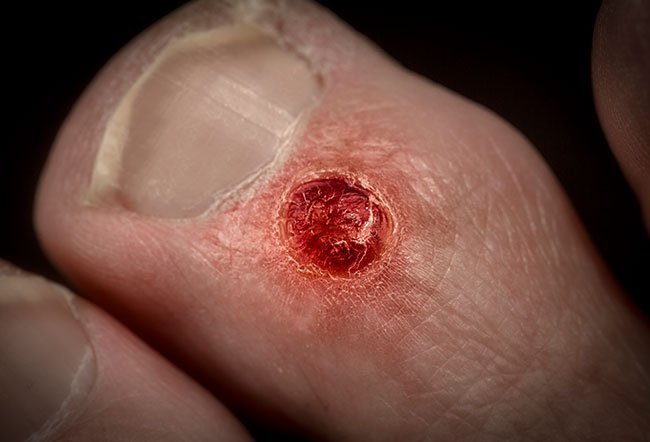How Do You Get Rid of a Myxoid Cyst?

Myxoid cysts are small, benign lumps that are filled with mucus and often appear on the fingers or toes. Since myxoid cysts are not harmful and usually not painful, there is usually no need to seek treatment.
However, if it is bothering you, a myxoid cyst can be removed with nonsurgical, surgical, and home remedy treatment methods.Treatment options for myxoid cysts
Nonsurgical options
- Repeated needling: This procedure involves puncturing and draining the cyst using a sterile needle or knife blade. It requires 2-5 sessions. Repeated puncturing and draining have shown to have a success rate of up to 70%.
- Injection with steroids: In this procedure, the cyst is drained initially to remove all fluids. Next, a mixture of lidocaine (anesthesia) and steroids (sclerosing agents) is injected into the site. Steroids destroy the cyst by sclerosis of the underlying blood vessels supplying the cyst. This procedure has a high recurrence rate, between 30%-70%.
- Cryotherapy: This procedure involves draining the cyst, followed by the application of liquid nitrogen. Liquid nitrogen helps freeze and thaw the cyst and blocks more fluid from reaching the cyst.
- Carbon dioxide laser: In this procedure, the cyst is drained and burned off. This procedure is not done often, due to the lack of availability of lasers and the required expertise.
- Infrared coagulation: This procedure uses infrared radiation and converts it to heat to burn off the cyst base.
- Intralesional photodynamic therapy: The cyst is drained and a substance is injected to make it light-sensitive. Laser light is used to burn off the cyst base.
| Treatment options | Recurrence rate (%) | Tolerability | Complications |
|---|---|---|---|
| Repeated needling | 28%-50% | Painful and decreases patient compliance | Chances of infection (2%-3%) |
| Injection with steroids | 30%-70% | May or may not be painful |
|
| Cryotherapy | 14%-44% | Painful | Significant scarring of the skin |
| Carbon dioxide laser | 33% | Quick procedure and low risk of infection | Possible injury to the surrounding tissues |
| Simple excision | >25% | Higher success rate | Possible minor scarring |
| Infrared coagulation | 14%-22% | Quick procedure, minimal superficial tissue destruction | Risk of blistering, pain, and redness |
| Intralesional photodynamic therapy | No recurrence rate | Treatment was well-tolerated without scarring | Inflammation and cell death |
Surgical treatment
Surgery to remove a myxoid cyst has a high success rate of about 88%-100%.
Surgery involves excision, where the cyst is cut out completely and closes the area with a skin flap. The size of the flap is determined by the size of the cyst. In some cases, a dye may be injected to identify the point of fluid leakage and then seal it up.
Home remedies
You can also get rid of a myxoid cyst at home:
- Immerse the affected finger or toe in hot water
- Apply local heat to the cyst
- Massage the cyst
- Use firm compression on the cyst every day for a few weeks
- Apply topical steroids to the cyst
- Apply silver nitrate to the cyst
What causes a myxoid cyst?
Myxoid cysts usually develop in people 50-70 years of age, although people of all ages may be affected. Women are twice as likely to be affected as men.
The cyst often affects the joint nearest to the fingernail, called distal interphalangeal joint, and can be found on the thumb or any of the other fingers. Causes for a myxoid cyst may include:
- Osteoarthritis
- Trauma to the digit
- Repeated irritation to the digit

